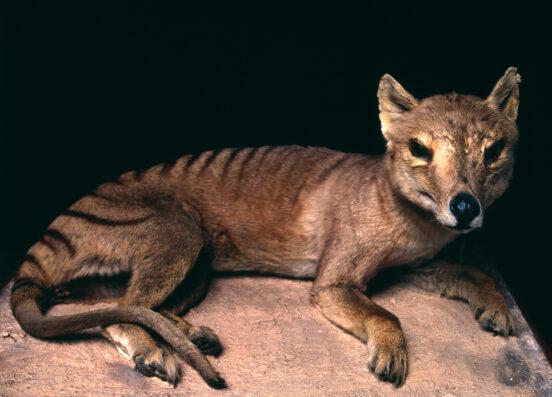The Tasmanian tiger species, also called by the name thylacine, went extinct on September 7, 1936, after the last known thylacine died at a zoo.
Conservation efforts to preserve the tigers came too little, too late. The thylacine’s death occurred only two months after the species was granted protection.
Since then, many searches for the thylacine have been conducted, although no one has managed to locate or capture one.
Research suggests that they survived in the wild for several more decades than experts originally thought–some say until the late 1980s or 1990s.
A few people even believe there is a chance they are still alive today, despite the fact that there is no solid evidence to confirm this belief. Thylacines look a lot like wolves or dogs. Because of this, many have claimed to catch a glimpse of a thylacine.
Tasmanian tigers were named for their distinctive stripes across their lower backs. They were native to Australia and are considered to be the world’s largest carnivorous marsupial.
Like other marsupials, Tasmanian tigers had pouches, but while most marsupials had front-facing pouches, the thylacine’s pouch opened to the rear of their bodies.
A number of factors led to the tiger’s extinction, including hunters, the introduction of the dingoes, and the destruction of habitat.
But one of the primary causes was a government bounty established by the first European settlers in the 1880s. At the time of European settlement, the population of the tigers hovered around 5,000.

Sign up for Chip Chick’s newsletter and get stories like this delivered to your inbox.


